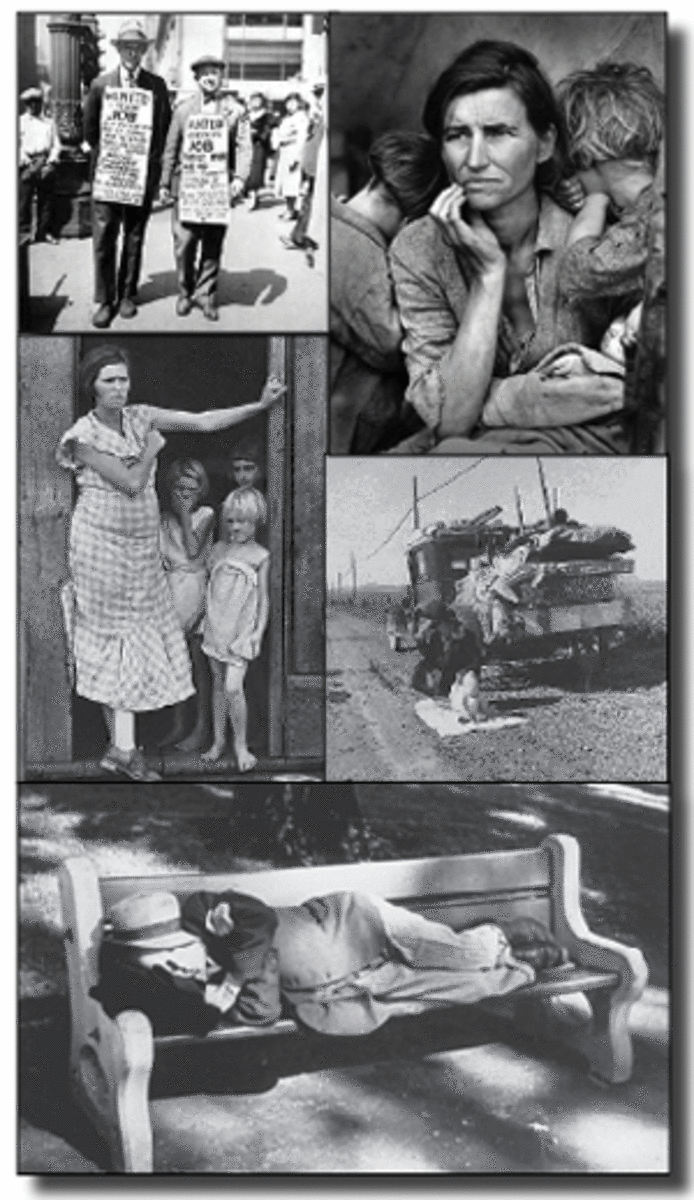We need jobs!

Unemployed men vying for jobs at the American Legion Employment Bureau in Los Angeles during the Great Depression.

Selling apples, Jacksonville, Texas. October, 1939. Photographer: Russell Lee. Many tried apple-selling to avoid the shame of panhandling. In New York City, there were as many as 6,000 apple sellers on the street.
One of most significant characteristics of the Great Depression is the lack of jobs. The stock market crash in 1929 triggered the mass depression that last for several years. Many people were out of a job.
Picture one depicts a crowd of people fighting to get their names registered.Picture 2 shows a lady with a cart selling apples.
Compared to the crowd, this lady seems to be more independent, tough and have more control of her life.
Although picture 1 shows a more striking image of how desperate people were during the hard-time.



 A Normal Stock market, Just what he wanted. Wish denied. This Cartoon is fro 1929.
A Normal Stock market, Just what he wanted. Wish denied. This Cartoon is fro 1929. The Stock Market crash in New York of 1929.
The Stock Market crash in New York of 1929.

 After World War I, Americans were not in favor of all German related things. Language was a major principal focus of legislation at the state and local level. The performance of German music at symphony concerts and the meetings of German-American civic associations were things that Americans find objectionable. Some states and towns even banned the use of German language. On April 9, 1919, Nebraska enacted a statute called Siman Act, a restrictionrelating to the teaching of foreign languages in the state of Nebraska”.
After World War I, Americans were not in favor of all German related things. Language was a major principal focus of legislation at the state and local level. The performance of German music at symphony concerts and the meetings of German-American civic associations were things that Americans find objectionable. Some states and towns even banned the use of German language. On April 9, 1919, Nebraska enacted a statute called Siman Act, a restrictionrelating to the teaching of foreign languages in the state of Nebraska”.











